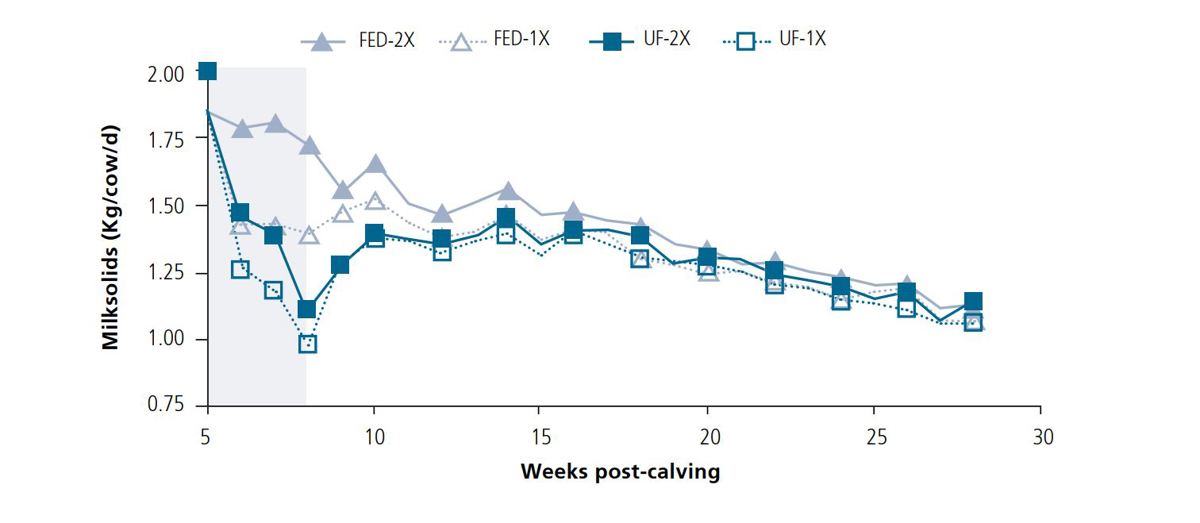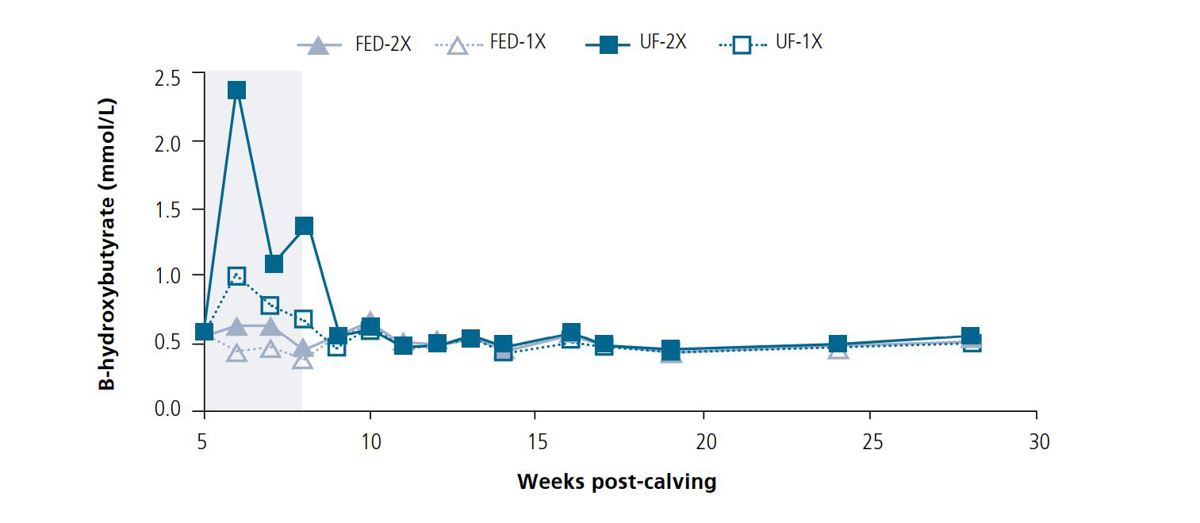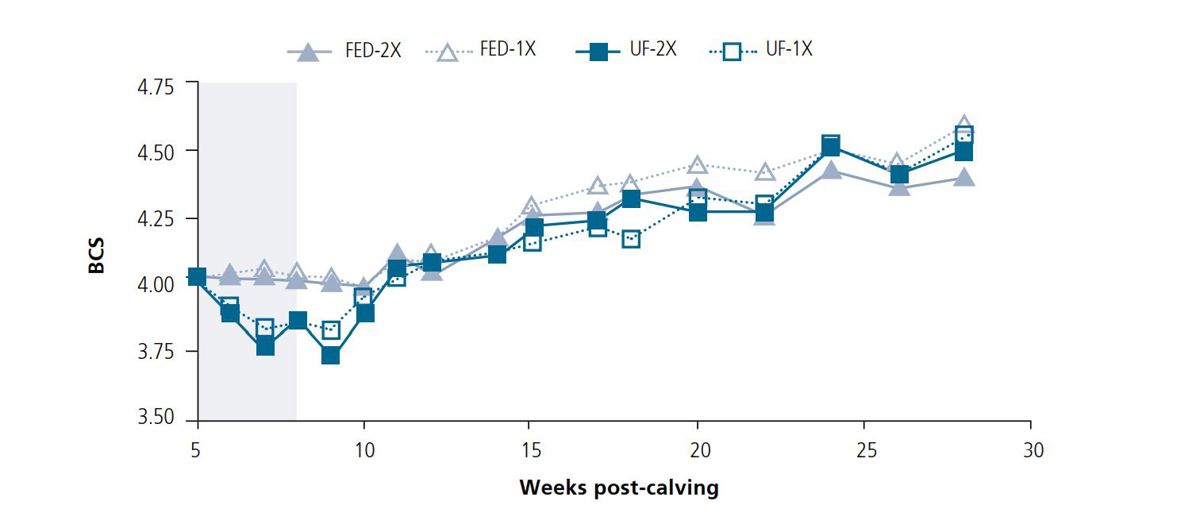Early lactation once-a-day (OAD) milking
8 min read
Early lactation once-a-day (OAD) milking is a short-term strategy used during the calving period. Understanding the benefits and trade-offs helps you make informed decisions for your herd and business.
Benefits of early lactation OAD include reduced workload, improved cow health, and better energy status for the cows. Research suggests it will also lead to reduced milk production for the season, with 1-2% less kgMS for the season if the herd is on OAD for three weeks from planned start of calving and 3-5% less kgMS for the season if the herd is on OAD for six weeks from planned start of calving.
Find out about new milking frequency insights and regional trends, plus hear about the experiences of some farmers using once-a-day (OAD) milking in early lactation.
Reduced kilograms of milksolids per cow per day (kgMS/cow/day) for the season, even after returning to twice-a-day milking.
Strategies to maximise the labour benefits of milking OAD while minimising the loss of milk revenue include:
Figure 1: OAD milking for a set period e.g., OAD for the first 3 weeks of calving regardless of how long individual cows get.

Figure 2: OAD milking for a set time for each cow from calving.

Early lactation once-a-day research in pasture-based systems
A study was carried out on DairyNZ’s Lye Farm in 2009/10 with 150 mixed age, Holstein -Friesian x Jersey cows, separated into five groups.
Cows were offered a generous pasture allowance of 30-40 kg DM/cow/day (target post-grazing residuals of 1800 kg DM/ha). They were also fed 2 kg DM/cow/day of concentrates (13 MJ ME/kg DM) for two weeks pre-calving; 4 kg DM/cow per day from calving (July) to November; followed by 2 kg DM/cow per day until mid-November, and pasture only thereafter.
Body condition score loss during the first four weeks post-calving was similar between cows milked OAD and TAD.
Post-calving milking frequency did not affect reproductive performance. Cows temporarily milked OAD post-calving had similar anoestrous intervals and submission, conception, and pregnancy rates to those milked TAD, agreeing with previous research on short-term effects of milking frequency.
Thus, the differences in energy status and BCS were not sufficient to alter reproduction in this experiment. It remains unclear from this work if short-term early-lactation OAD milking can improve reproduction when cows calve below target BCS and/or are underfed, causing poor BCS during early lactation. Anecdotal evidence from South Island herds suggests short term use of OAD has a beneficial effect on reproductive performance.

Figure 1. Milksolids yields of cows milked once-daily (1X) for either three or six weeks post-calving compared with twice-daily (2X) milking for the whole lactation. The arrows indicate when cows were switched to 2X milking.

Figure 2: Body condition score of cows milked OAD for either three or six weeks post-calving compared with TAD milking for the whole lactation. The arrows indicate when cows were switched to TAD milking.
Read the full article here.
At the farm level, several approaches can minimise the total milksolids loss when using short-term OAD milking in the immediate post-calving period. Confining OAD milking to the colostrum period only or milking the whole herd OAD for a set period, such as three weeks from the planned start of calving, may be useful.
Milking the herd OAD for a set time period (like figure 1 above) reduces milk production loss as more cows have shorter OAD milking duration as calving progresses (as opposed to a set time per cow).
Models predict that milking the herd OAD for three or six weeks from the planned start of calving and then TAD thereafter will reduce annual farm MS production by 1-2% or 3-5%, respectively. Milking OAD during the colostrum period only (i.e., eight milkings) and then TAD thereafter will reduce milksolids production by about 2%.
A herd-based OAD milking strategy is likely to be more effective at reducing workload and improving farmer/worker stress during calving. Less time spent on milking-related activities may save labour costs. In addition, more time is available for other tasks (e.g., grazing management, animal health, etc.).
If these areas are managed more effectively, any positive effects on animal husbandry and, therefore, milk production may partially compensate for the reduced milksolids from OAD milking.
In pasture-based dairy systems, extreme weather events such as floods, heavy snowfall, or storms can result in severe feed shortages that will negatively impact not only milk production but also reproduction and animal welfare.
If there is an acute feed shortage in early lactation careful consideration should be given to the consequences of OAD milking as a management strategy, including financial impact.
It is likely more profitable to supplement feed than to use OAD milking to reduce feed demand and BCS loss.
Acute feed deficit study
120 mixed age (≥3 years) Holstein-Friesian and cross-bred cows, at ~five weeks post calving.
Put into four groups for a three-week period:
| Fed and milked TAD | Fed and milked OAD | Underfed and milked TAD | Underfed and milked OAD | |
| Post-grazing residuals (rising plater meter clicks) | 7.8 | 7.6 | 4.5 | 4.6 |
| Estimated pasture DMI (kg DM/cow/day) | 13.6 | 14.2 | 8.1 | 8.0 |
| Estimated energy intake (MJ ME/cow/day) | 170 | 177 | 101 | 99 |
| Total (kg MS) to 23 weeks | 230 | 211 | 209 | 200 |
| Difference (kg MS) relative to fed and milked TAD | 19 (8%) | 21 (9%) | 30 (13%) |
Figure 1 (below) shows cows that were underfed and milked twice-a-day produced 9% less milksolids over the season, and cows that were underfed and milked once-a-day produced 13% less milksolids over the season.

Figure 1. Milksolids (MS) yield from cows fed to recommended levels (FED) or underfed (UF) and milked either twice (2X) or once-daily (1X). The three-week treatment period is represented by the shaded area.
Figure 2 (below) shows that in underfed cows milked twice-a-day, blood concentration of β-hydroxybutyrate exceeded 2mmol/L putting them at risk of clinical ketosis. It also shows a lower risk of ketosis when underfed cows are milked once-a-day. Average β-hydroxybutyrate concentrations did not exceed 1 mmol/L.

Figure 2. β-hydroxybutyrate concentrations of cows fed to recommended levels (FED) or underfed (UF) and milked either twice (2X) or once-daily (1X). The three-week treatment period is represented by the shaded area.
Figure 3 (below) shows cows milked once-a-day during a feed deficit still lost ~0.2 BCS units during the 3-week feed shortage - the same as cows milked twice-a-day and underfed. The lack of an effect of once-a-day milking on BCS loss in underfed cows may be because BCS is a relatively crude measure of energy status and three weeks may not have been long enough to detect subtle changes in energy stores using this method.

Figure 3. Body condition score (BCS) of cows fed to recommended levels (FED) or underfed (UF) and milked either twice (2X) or once-daily (1X). The three-week treatment period is represented by the shaded area.
Read the full research article here.
Supporting research from Ireland
A 2021 study was carried out in Ireland with 4 test groups.
The key findings in this study were:
This study is consistent with the New Zealand research, indicating about a 0.8% per week impact to milksolids production and therefore ~1% reduction in total kgMS/cow for the season if milking OAD for the colostrum period.
| New Zealand study | Ireland study | |
| Impact on milksolids production for the season | ||
| Herd milked OAD for 3 weeks from the planned start of calving | 1-2% less | |
| Herd milked OAD for 4 weeks from the planned start of calving | 2.4% less | |
| Herd milked OAD for 6 weeks from the planned start of calving | 3-5% less | 4.1% less |
| Herd milked OAD for 8 weeks from the planned start of calving | 6.7% less | |
Read the full research article here.
Now’s the perfect time to check in, plan, and set up for a strong season. We’ve pulled together smart tips and tools to help you stay ahead all winter long.
Whether you prefer to read, listen, or download handy guides, we’ve got you covered with trusted tools to support your journey every step of the way.
Put our proven strategies and seasonal tools to work. Boost production, support animal health and watch your profits hum.
Tools that are backed by science, shaped by farmers and made for this season.
That’s Summer Smarts.